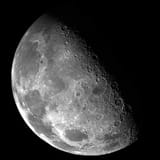Moon Monday #233: Visualizing a new Moon based on scientific discoveries by China’s Chang’e 6 mission
Highlighting all major findings with a visual that lets you picture the scientific value the Chinese have added to humanity’s exploration of our Moon.
I’m over the Moon to share that Open Lunar Foundation is continuing to be a sponsor of my Moon Monday blog+newsletter for the fifth year in a row! 🌕

Open Lunar is a non-profit organization that actively promotes cooperative, peaceful, and sustainable exploration of our Moon. The organization enables experts globally to collaborate and develop equitable technical and policy building blocks to such ends. It’s a mission I love so much—alongside the people—that I’ve been happily aiding it as their Science Communications Lead since this year. 🚀
Note: All Moon Monday sponsorships, including that of Open Lunar, abide by my public Editorial Independence Policy with zero exceptions.
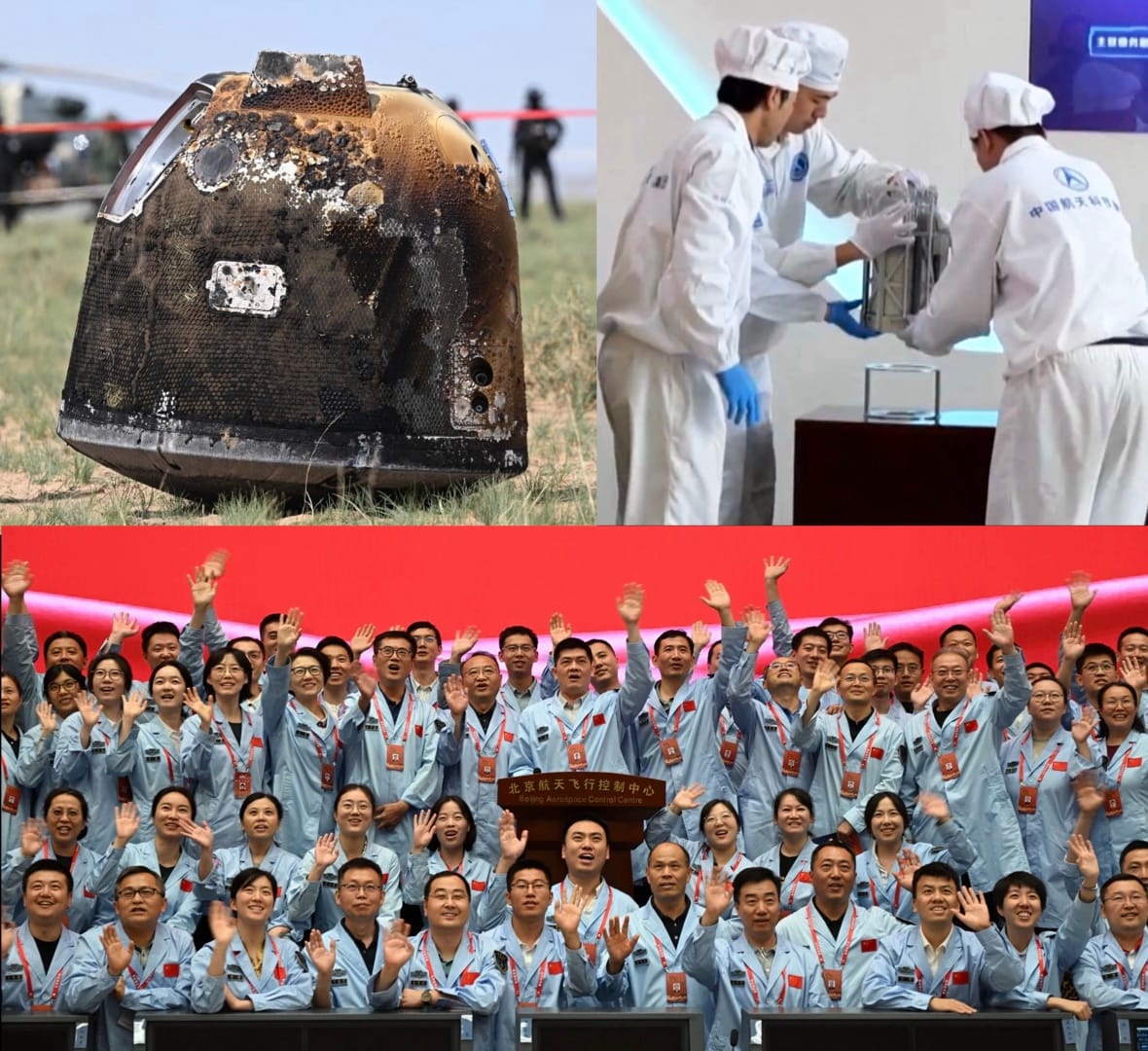
CNSA held a press conference on July 9 to share novel findings about our Moon as revealed by Chinese researchers studying lunar farside samples brought to Earth by the Chang’e 6 mission last year. This is a good time to highlight all major findings with an accompanying visual that lets you picture the scientific value the Chinese have added to humanity’s exploration of our Moon.
Note: Unlike as reported in many media outlets, the findings include but are not actually limited to the four papers that appear in the July 10 edition of Nature. Some reports are also calling these papers new whereas all but one of them were published earlier. The four papers are simply bundled in this journal edition for context. And there are more elsewhere.
First, take a good look at the sampling site of Chang’e 6 on the Moon, lying at 153.99° W, 41.64° S within the farside Apollo impact crater.
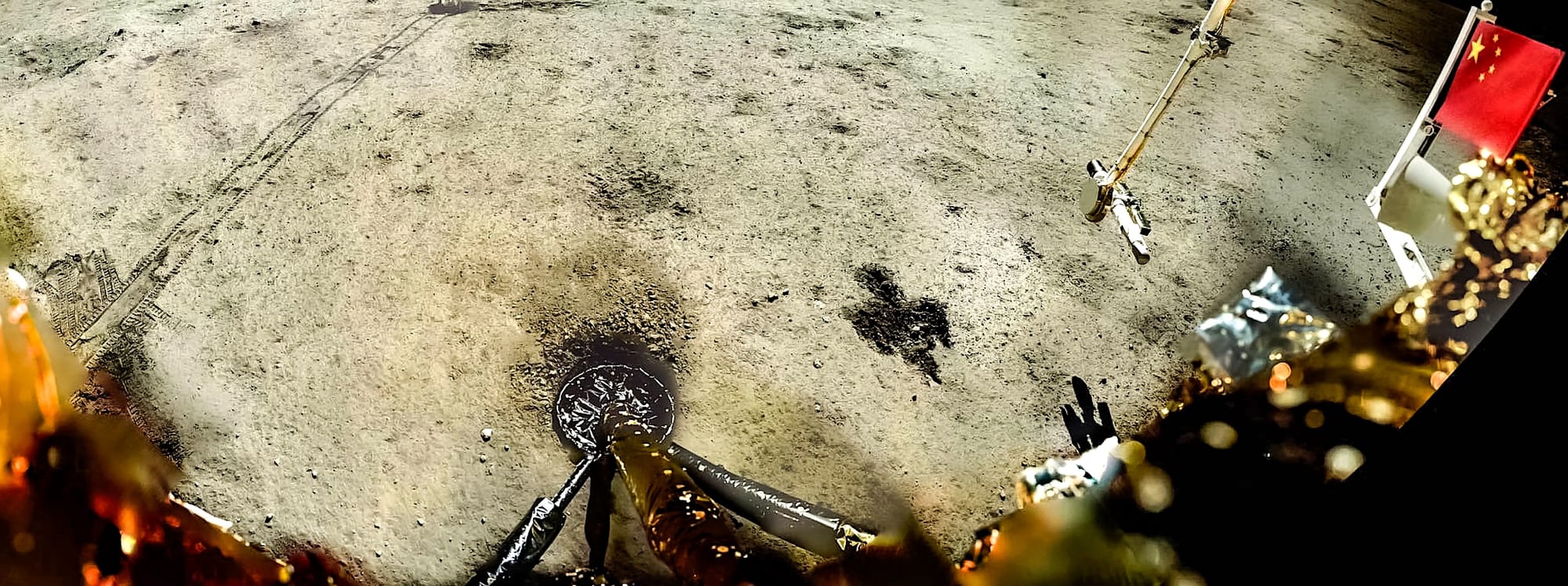
Below is a good look at some scooped samples. Most of the Chang’e 6 samples are stored at NAOC of CAS.
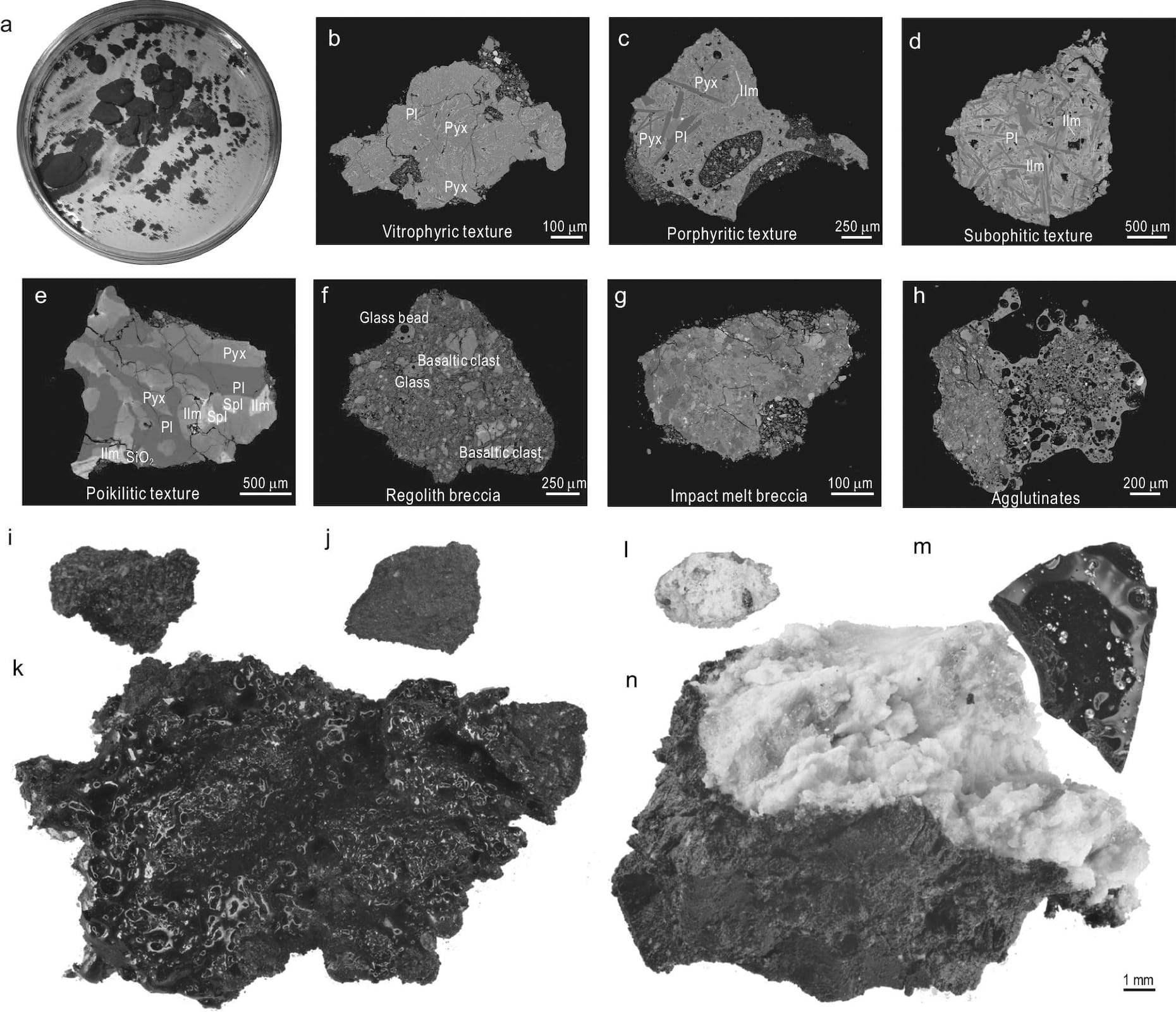
Alongside the 2-billion-year-old samples from Chang’e 5, the Chang’e 6 samples at 2.8 billion years old are among the youngest volcanic material fetched from Luna. Earlier Apollo and Luna volcanic samples are not only older, they belong to a different era in the evolution of our Moon.
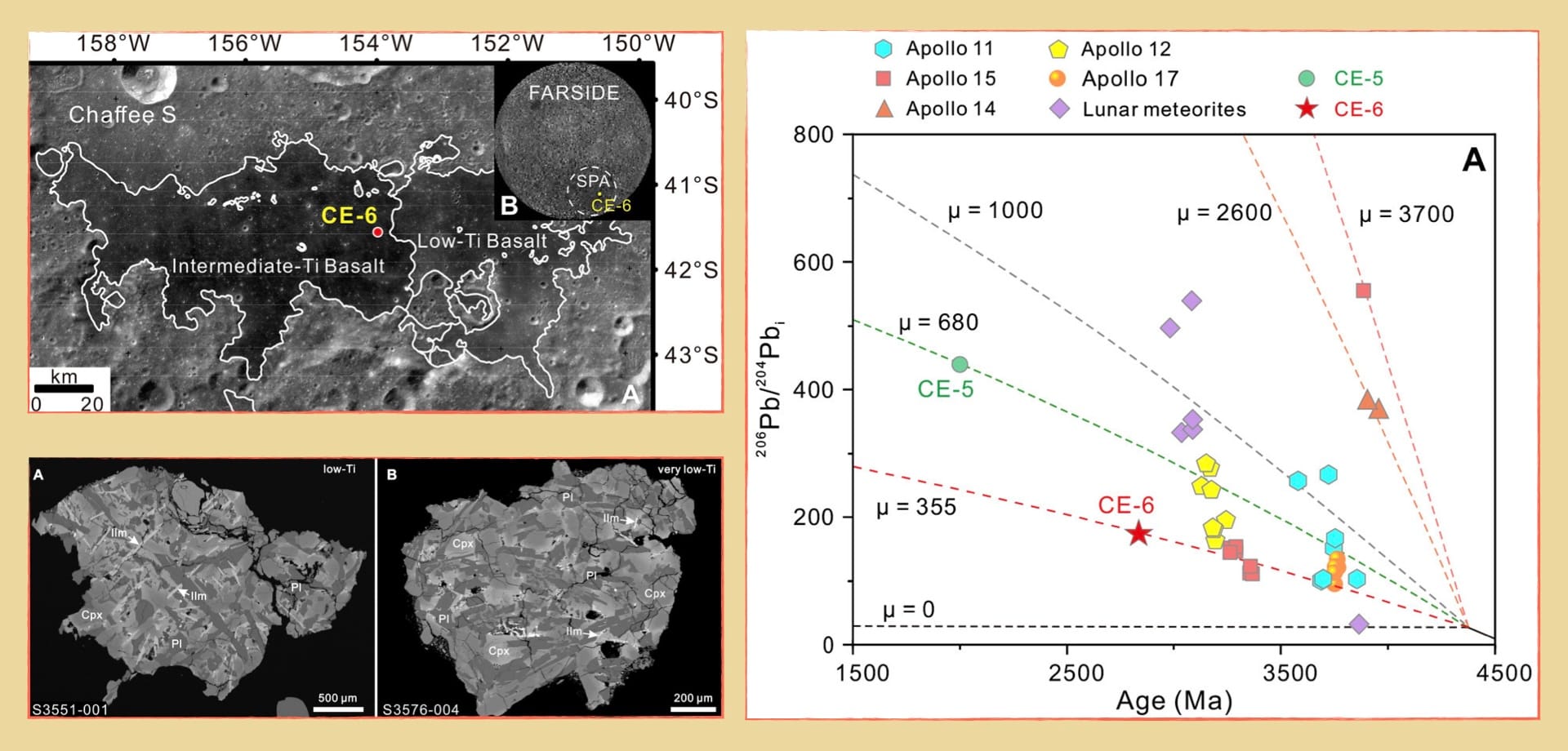
One Chang’e 6 study did find evidence of a distinct volcanic episode about 4.2 billion years ago amid samples otherwise dominated by the 2.8-billion-year aged basalts. Scientists concluded that the former was due to the presence of heat-producing and radioactive elements whereas the volcanic outbursts 1.4 billion years later took place despite the lunar interior beneath the landing site being deprived of such catalysts. Chang’e 6 findings have thus added to the complexities of the Moon’s volcanic history.
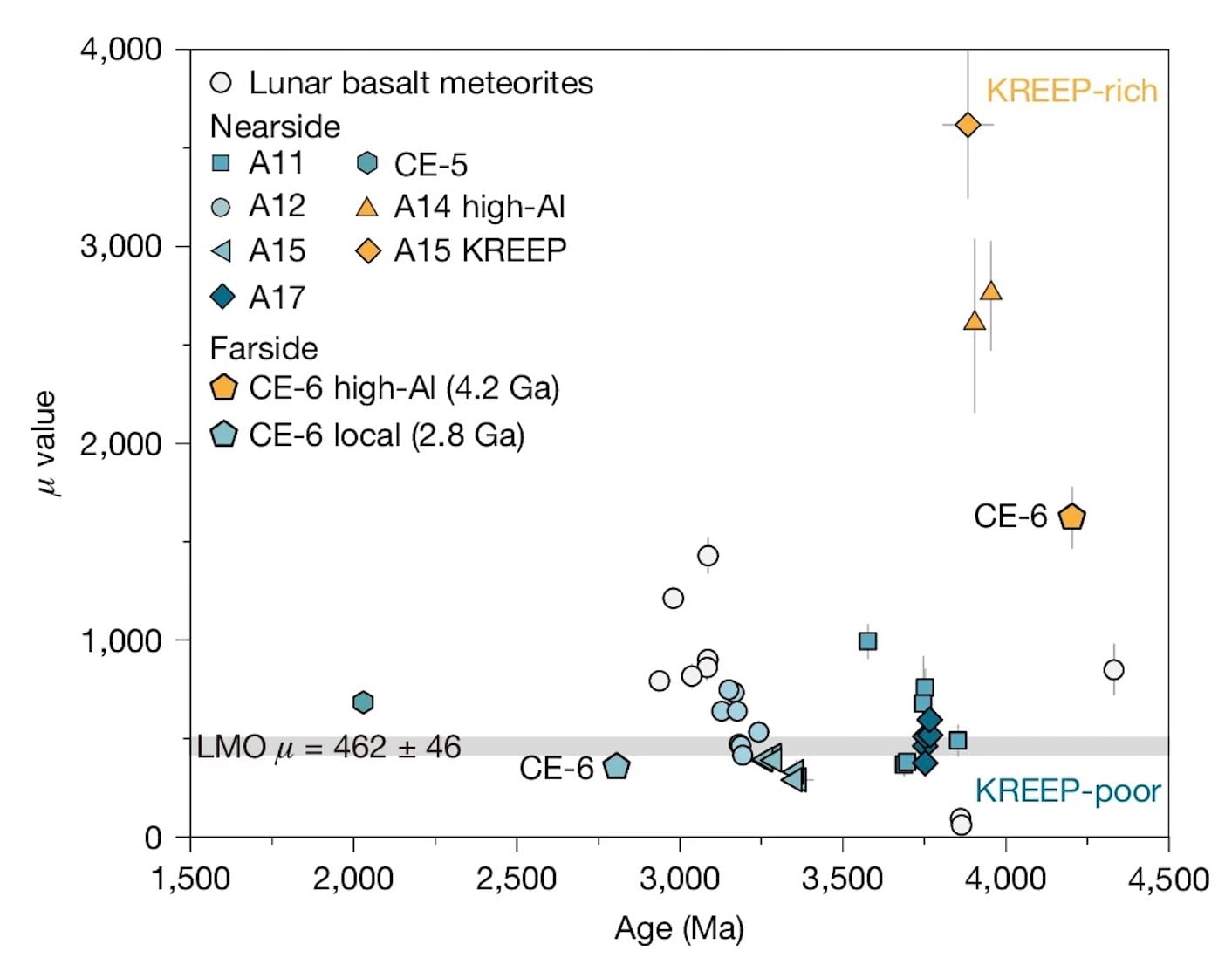
Another interesting result from the same paper was that the accurate, lab-determined age of 2.8 billion years for the dominant Chang’e 6 basalts falls right in line with their approximate age as previously estimated using the remote crater counting method. This means that the crater-counting based age model established for the Moon’s nearside is gladly closely applicable to features on the farside too. This is what lunar dating for lunar scientists looks like.
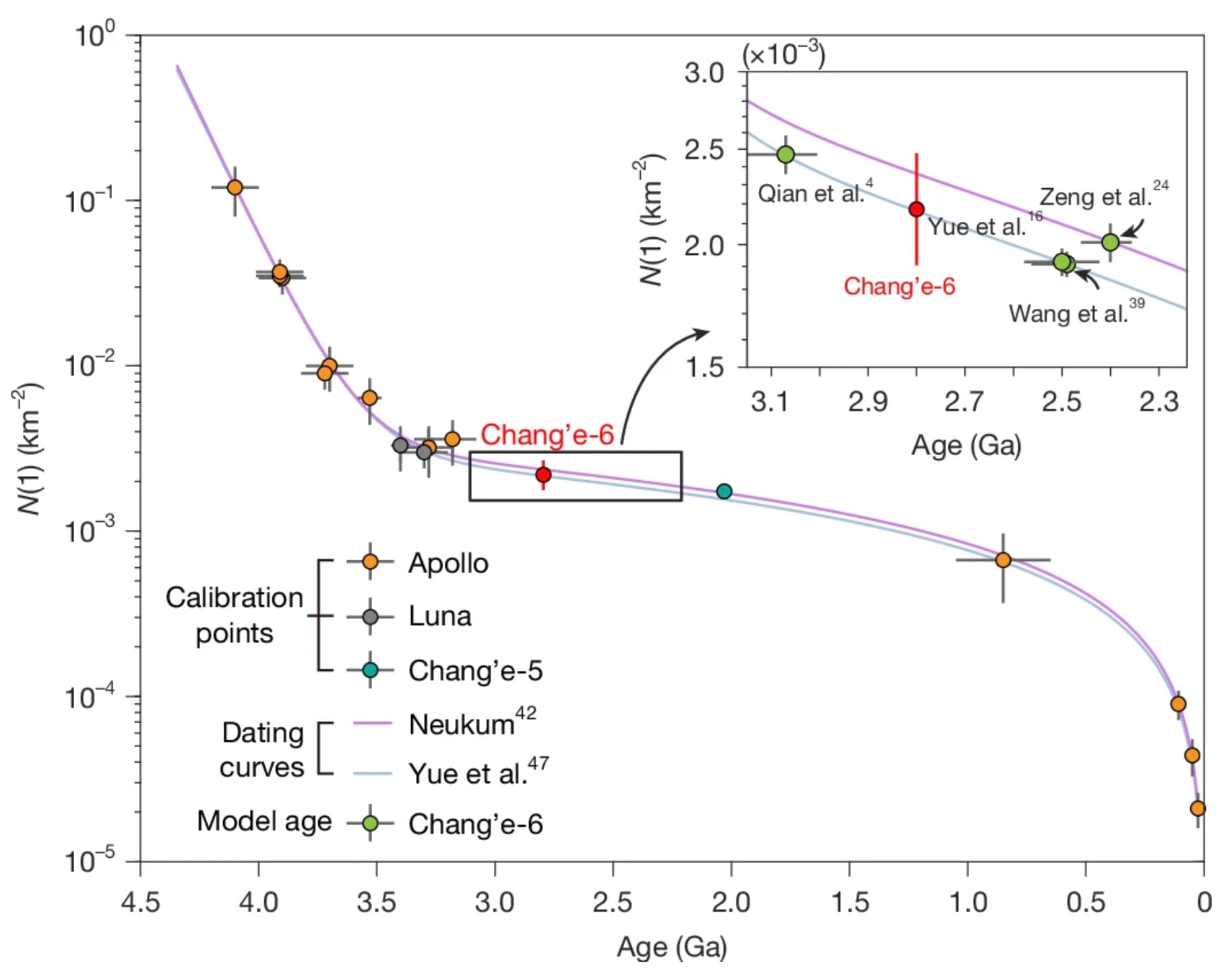
In contrast, dating Chang’e 5 samples led to noticeably shifted ages of lunar features as well as refining of the nature of impacts over the last 2 billion years in the inner Solar System. For example, it’s because of Chang’e 5 that scientists realized that some lunar features may be up to 240 million years older than previously thought.
Another study of the dominant Chang’e 6 basalts with embedded micrometer-sized iron grains revealed a surprising increase in magnetic field strength, providing the first ground truth constraints for farside lunar magnetism. From the paper:
These results record a rebound of the field strength after its previous sharp decline of around 3.1 Ga [billion years ago], which attests to an active lunar dynamo at about 2.8 Ga in the mid-early stage and argues against the suggestion that the lunar dynamo may have remained in a low-energy state after 3 Ga until its demise.
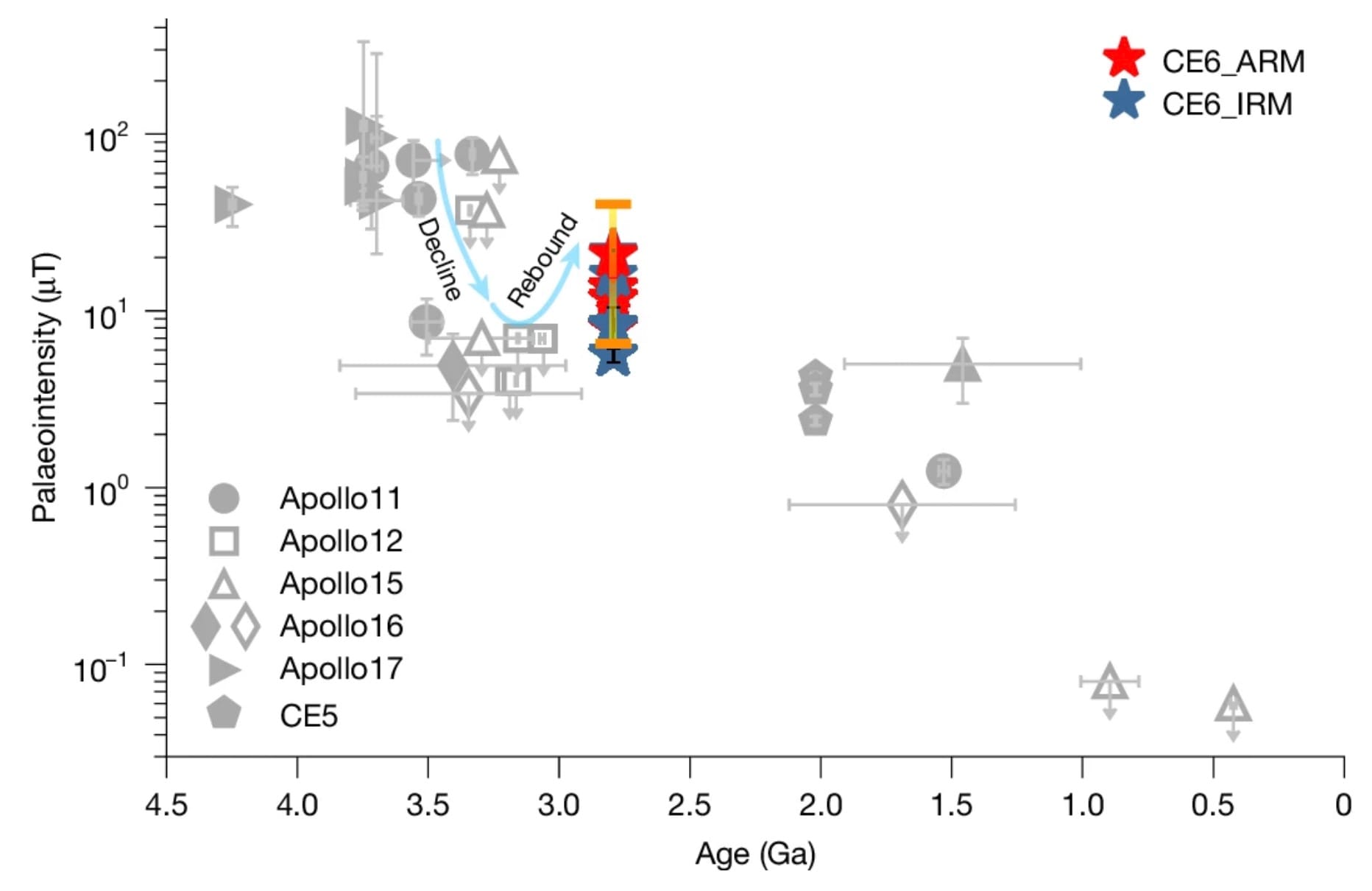
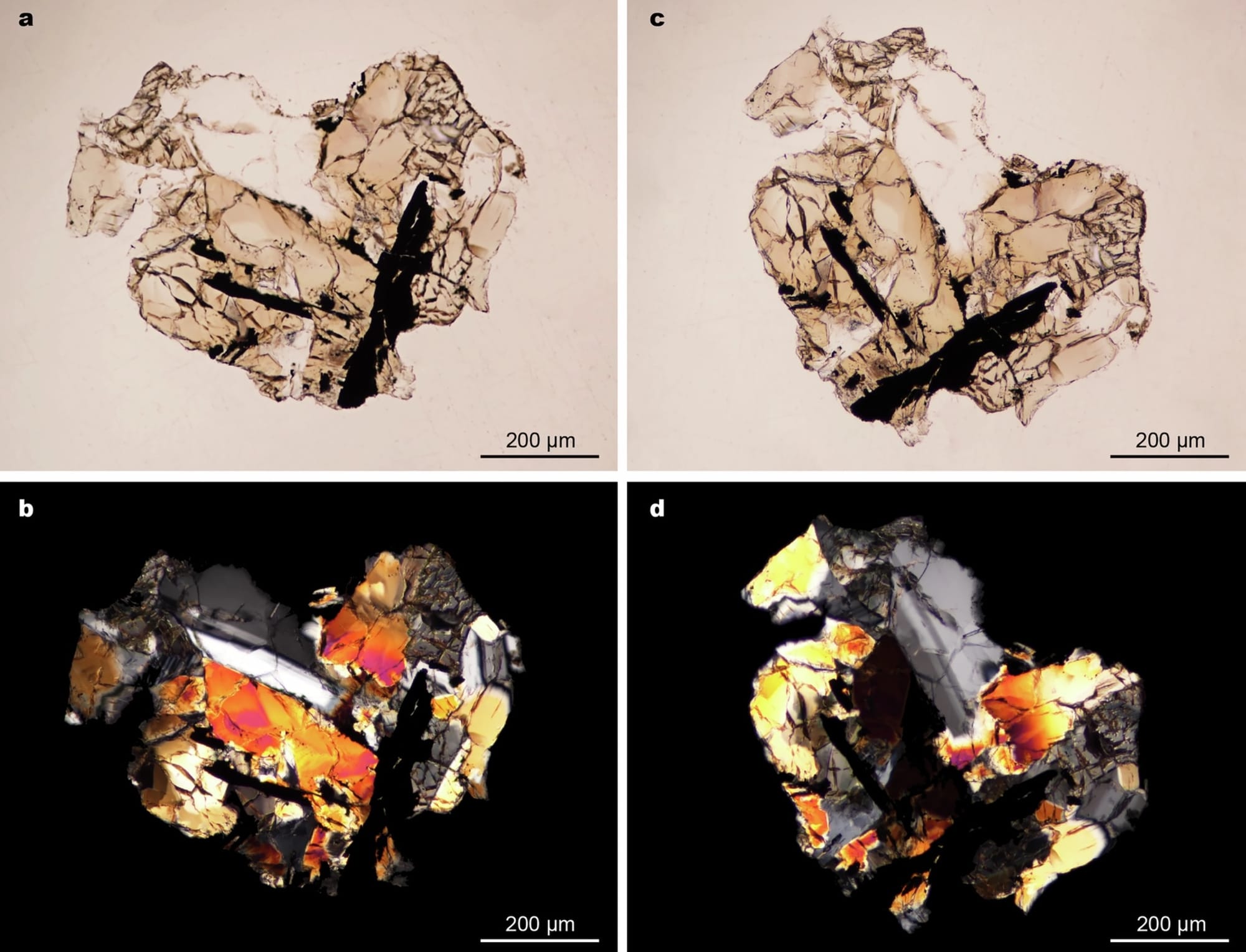
Let’s switch gears to the few hundred million years after our Moon’s fiery formation. This earliest era of Luna’s evolution is where findings from Chang’e 6 have been deeply insightful.
Until recently, all direct evidence of our Moon being covered in a global magma ocean shortly after its formation has come from Apollo and Luna samples sourced from nearside equatorial and near-equatorial regions. Surface measurements made by Chandrayaan 3’s Pragyan rover in 2023 extended this hypothesis’ validity to high-latitude regions on the nearside. But we lacked any such tactile measurements from the Moon’s farside. Recently though Chinese researchers studying two grams of Chang’e 6 samples confirmed the presence of key chemical elements that are compatible with a fully molten young Moon. Chang’e 6 has thus lent unequivocal credence to said hypothesis.
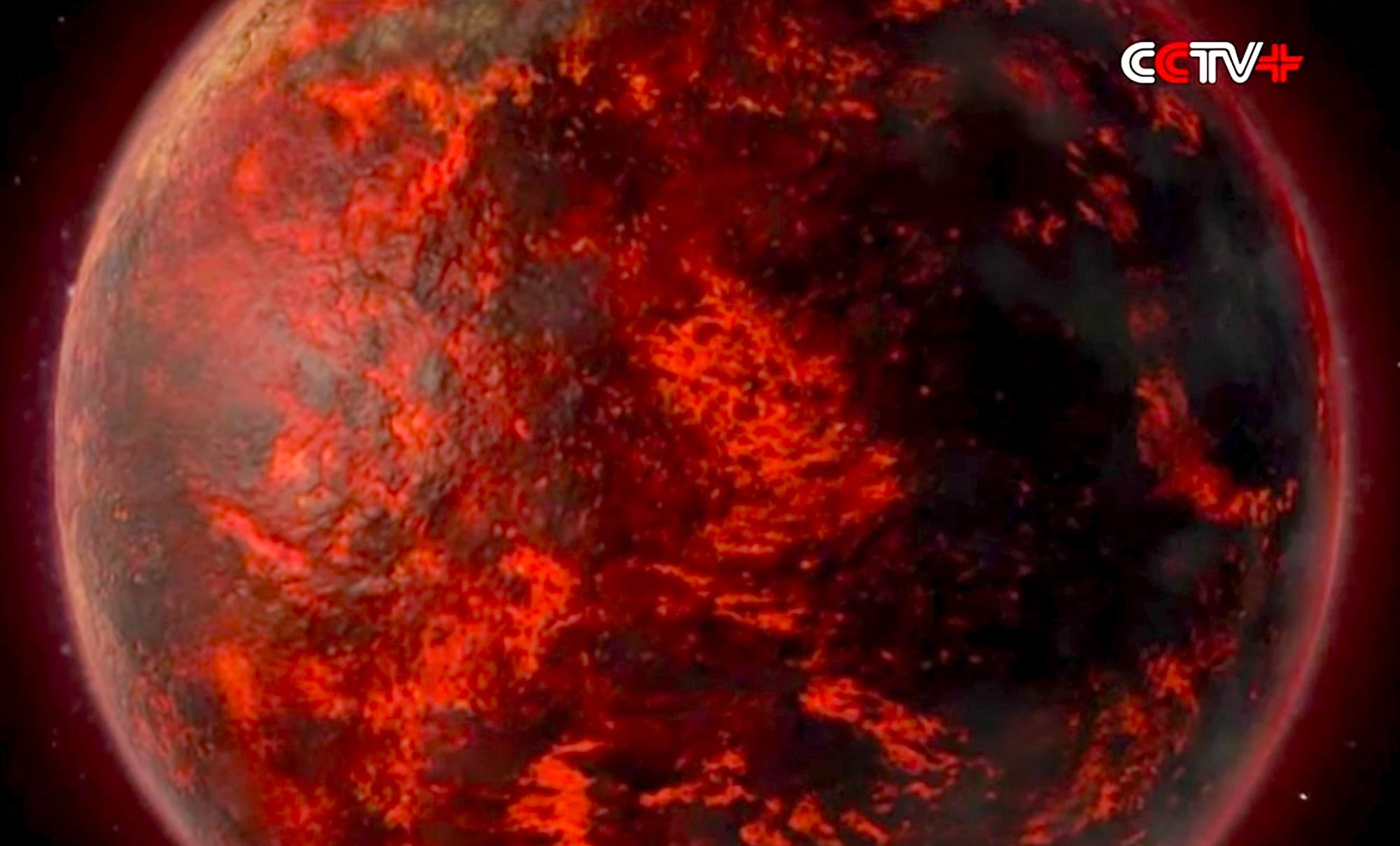
In another critical study, researchers analyzed 1600 fragments from five grams of Chang’e 6 samples and found 20 relevant pieces to determine the truest age yet of the massive South Pole-Aitken (SPA) basin—within which the spacecraft landed—as being 4.25 billion years. Spanning 2500 kilometers, the SPA basin is the Moon’s largest, deepest, and oldest impact crater. Its age and nature of formation has huge implications for understanding how our Moon evolved.

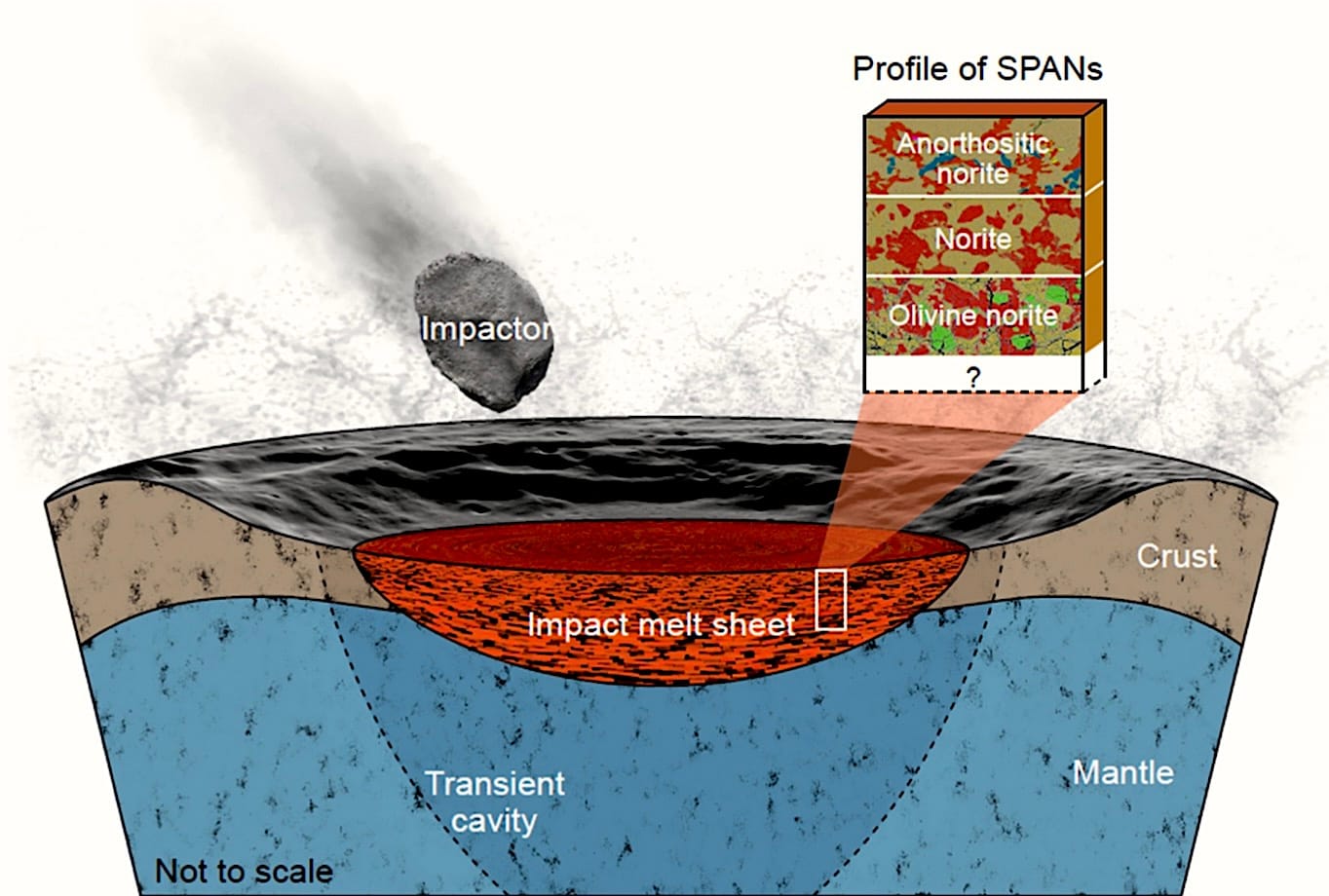
The CNSA release about the study notes:
This finding provides the first direct, sample-based evidence that the Moon's largest impact basin formed approximately 320 million years after the beginning of Solar System. The definitive age of 4.25 billion years for the SPA basin can serve as a crucial anchor point for refining the lunar cratering chronology and establishing a more complete temporal sequence of the Moon's early evolution.
The impact that created the SPA was so colossal that scientists think it changed the physical and chemical makeup of the Moon’s mantle down to hundreds of kilometers. And that’s exactly what more Chang’e 6 studies are finding. The dominant Chang’e 6 basalts are from lava erupted ~1.4 billion years after the SPA event’s morphing of the mantle. These thus exhibit a unique makeup compared to other volcanic lunar samples. A study of 16 fragments scooped up by Chang’e 6 found them severely lacking elements such as titanium and thorium.
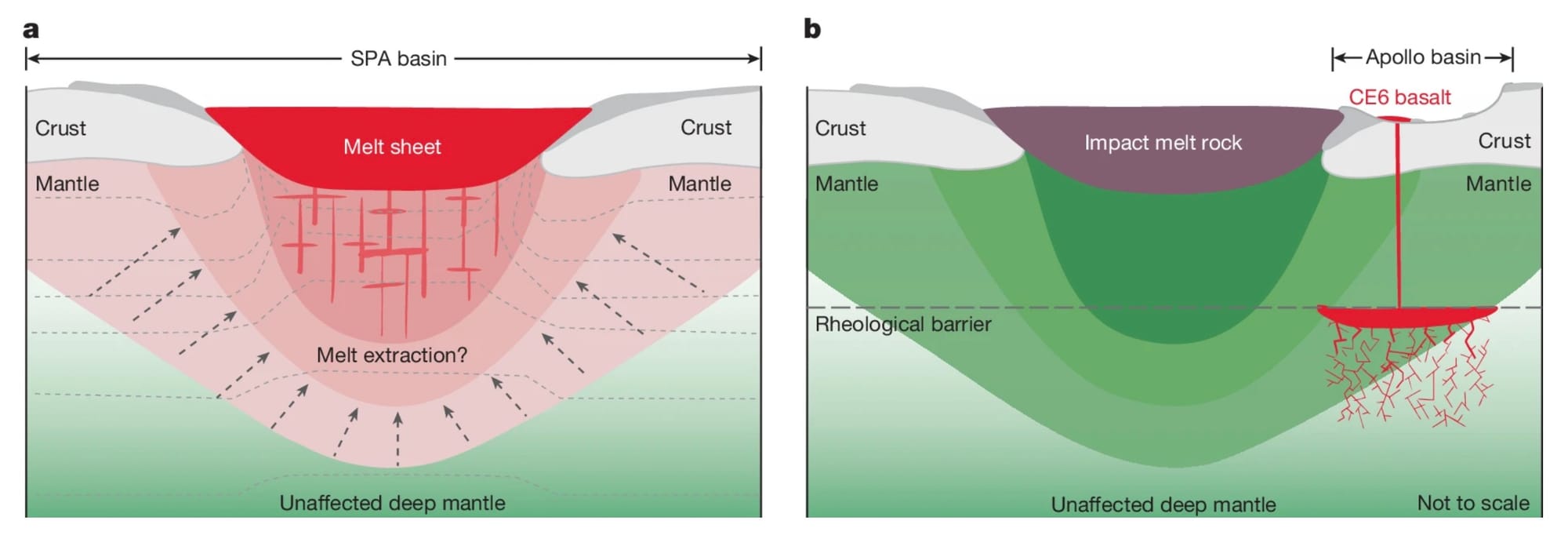
Another study analyzing 578 particles weighing a total of 5 grams revealed for the first time that the Moon’s farside mantle contains less water than within the nearside. The finding added to the debate on the topic by lending a solid and unique credence to the hypothesis that our Moon indeed lost most of its water during its fiery formation. CASC’s news release on the study noted how Francis McCubbin, NASA’s Astromaterials Curator and a peer reviewer of the paper, called the work “a landmark study on the water abundance of the lunar farside.”
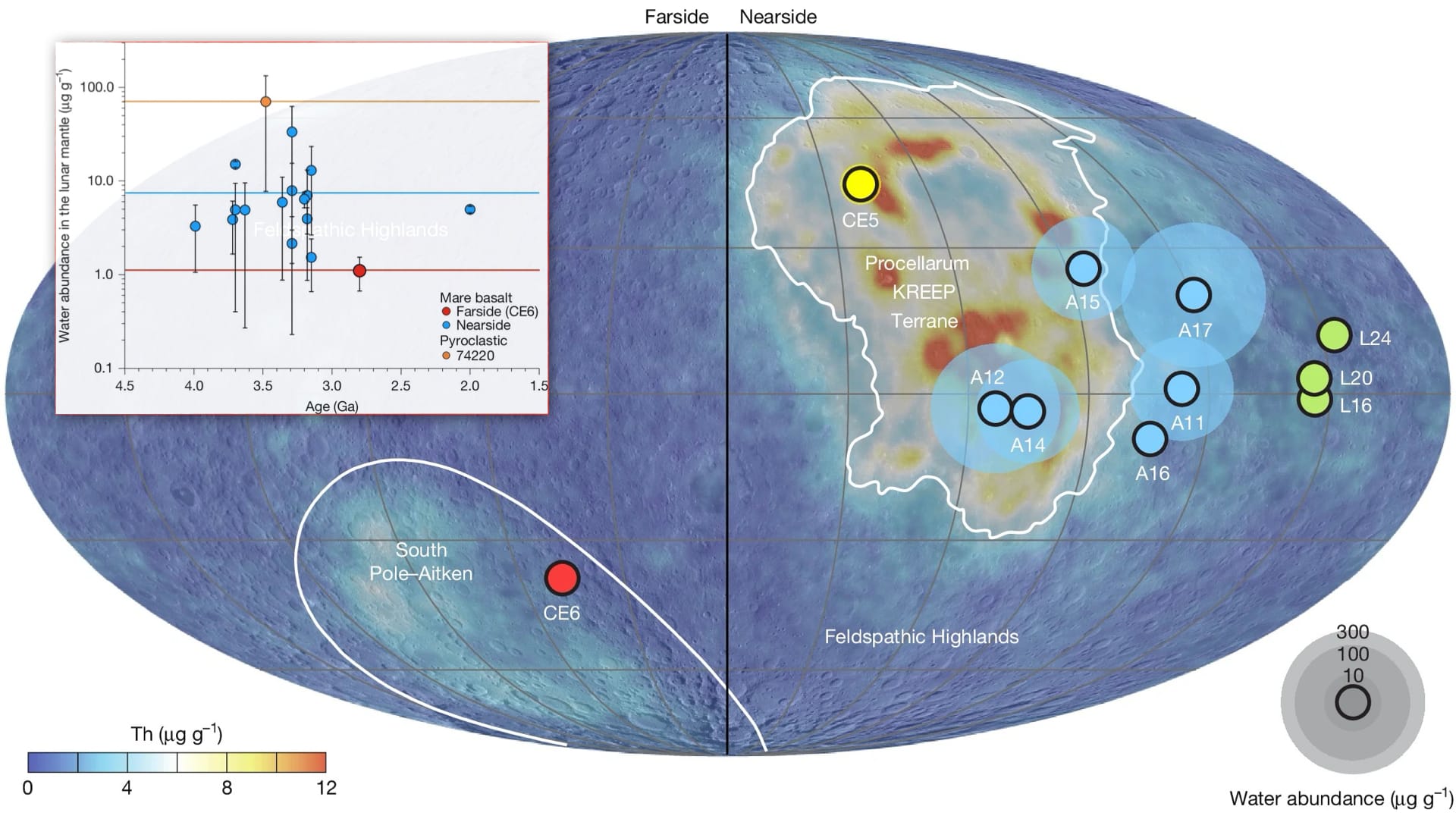
With this long march of notable scientific discoveries, China’s Chang’e 6 sample return mission has lived up to its bold promises of helping scientists advance on a host of Moon mysteries. Chang’e 6 anchoring past lunar events and providing literally deep insights on the Moon’s farside-nearside enigma is helping us not just understand our celestial companion’s evolution but that of our Solar System.
Many thanks to Open Lunar Foundation and Ajay Kothari for sponsoring this week’s Moon Monday! If you too appreciate my efforts to bring you this curated community resource for free, and without ads, kindly support my independent writing. 🌙
More Moon
- For the versatile Lunar Terrain Vehicle (LTV) to be used across Artemis missions starting end of decade at best, NASA has announced that the rover will carry three agency-funded instruments: an infrared spectrometer, a microwave spectrometer, and a ground penetrating radar. Together, these would map minerals, volatiles like water ice, and subsurface structures on the Moon’s south pole. NASA will also have an infrared spectrometer in orbit—but whose flight opportunity is not yet determined—to provide regional context for the LTV rover’s measurements and observations. The agency will announce later this year which of the three competing teams has been selected to make and operate the LTV.
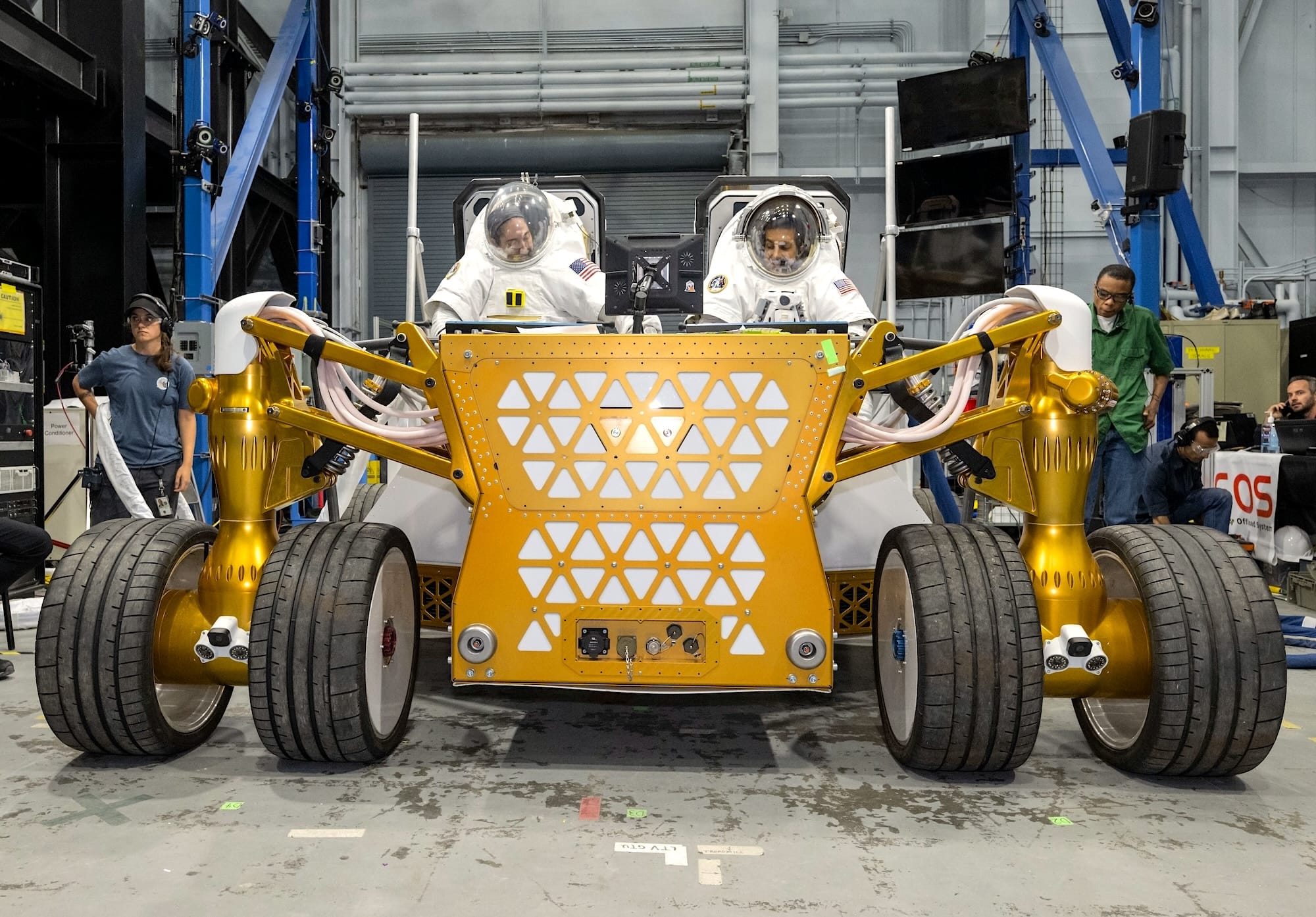
- US-based Advanced Space (who leads the NASA-funded CAPSTONE lunar orbiter mission) has partnered with Firefly Aerospace (who is building orbiters too and recently demonstrated a soft Moon landing) so as to study design reference missions for NASA for future lunar communications and navigation services, an area of lunar infrastructure which China currently leads.
- The Swedish Institute of Space Physics (IRF) is offering a PhD position for calibration and analysis of data obtained by the organization-built instrument on the Moon’s farside. The instrument is the Negative Ions at the Lunar Surface (NILS) payload, which flew on China’s Chang’e 6 lander last year. NILS detected negatively charged particles, a world first. These ions are produced due to highly energetic solar wind particles slamming the Moon’s surface and kicking up secondary particles. NILS is the first of two European and ESA-involved instruments to operate on the Moon’s surface, and was Europe’s first such collaboration with China.
